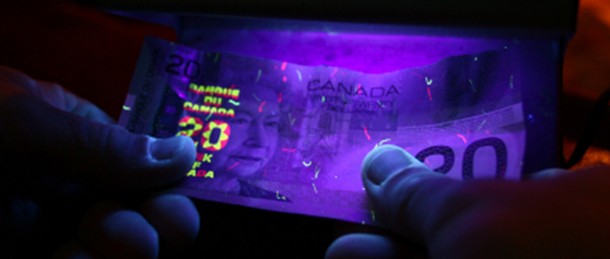Authentication and the Smart Phone Revolution
We are please to present you with the first feature article from our newest partner, Authentication News. The goal of Authentication News is to cover the wide ranging uses of authentication technologies, from brand protection, document security and personal identification. It is the area of currency security where we obviously share interest and these will be the articles and highlights we will bring to you as they are available. Authentication News, like its sister publication Currency News, is a  subscription based publication. As a result we will only be offering content and highlights from past issues. If you seek current information, we suggest you subscribe here… Authentication News / Currency News
August 2012 Feature Article
There is undoubtedly a revolution taking place in the use of mobile phones, and in particular smart phones, for authentication and track and trace purposes, which were put under the spotlight by Cambridge Consultants in their seminar – Authentication and the Smart Phone Revolution – at the recent Asian, Middle East and African High Security Printing Conference in Dubai from September 24-26. Â
The most basic authentication device is the human eye, which is the designated ‘tool’ for Level 1 security features. Moving up the scale, Level 2 features can be authenticated with simple devices such as loupes, magnifying glasses, polarizing lenses and UV pens. Such devices are, however, only an aid, and validation still relies on human judgment. For Level 3 and 4 security features, however, the device takes over. And – with the necessity to customise the devices to the technology – there are nearly as many tools for authentication as there are authentication features.
The proliferation of such features and specialised aids can be an impediment both to wider deployment and the full utilisation of their security benefits, since equipping inspectors – be these border agents, law enforcement, even the public – would be impossible. There is, however, a solution that combines universality, multi-functionality and yet also the ability to be customised for individual technologies – ie. the smart phone.
Mobile Phones Ubiquitous
Mobile phones – standard and smart – are ubiquitous. Over 90% of the world’s population has access to mobile networks and according to the ITU World Telecommunications database, there were some 6 billion mobile phone users in 2011. Interestingly, the growth of mobile phone use is not confined – as with many other technologies – to developed countries. The greatest growth is coming from developing countries. In Africa, for example, the continent will soon cross a threshold of mobile phone use, with one mobile phone for every African adult, if indeed it hasn’t already done so (source: Extensia). In these regions, mobile technology is leapfrogging fixed line, PC-based means of communication.
These figures, of course, relate to overall mobile phones, and not only smart phones, which are a relatively recent phenomenon. Even so, there are now an estimated 300 million Android smart phones in use, and 320 million iPhones, with over 1 billion smart phones estimated to be in use before the end of this year, according to Google’s figures and estimates from industry watchers such as the International Data Corporation (IDC) Worldwide Quarterly Mobile Phone Tracker.
Computing Power
At their simplest, mobile phones can be used to record an image of codes (barcodes, datamatrix, QR), serial numbers or features and relay these automatically for validation in a central database. Smart phones go several steps further, thanks to levels of resolution in their cameras and screens that weren’t even dreamt of a few years ago, with more computing power than existed in the world a few decades ago. And, with the introduction of 4G networks and the expansion of wifi hotspots, they have high speed communications to connect to central databases.
Thanks to this, and having proved themselves in handling complex algorithms and technical functions, smart phones have the potential to do much more than just record and transmit data for validation, important though this may be. They can also be used to interrogate and validate the security features themselves – not just those that have been specifically developed for the purpose, but existing features intrinsic to the print or substrate.
Special Apps
Special apps for to help the visually-impaired to validate banknote denominations, encoded and secure QR codes that provide product and document data along with supply chain history and even geo-coordinates, optical accessories that turn smart phones into miniature microscopes, image-processing algorithms that enable intaglio features to be validated,  apps that read the spectral signature of taggants … the list goes on. There is no doubt that the opportunities offered by smart phones represent a potential revolution in the way that secure documents are examined and validated, and by whom.
In their seminar, Cambridge Consultants covered:
- an overview of the technology
- the evolution of smart phones in the context of track and trace and authentication
- different technologies and systems now being developed for document authentication
- user case studies
- opportunities and benefits for issuers, inspectors, retailers and the general public.
Major Implications
The development of the smart phone as a tool for document verification and authentication has major implication for the  industry, not only complementing but perhaps, in time, doing away with the need for the different proprietary (and expensive) scanners and readers currently used for document inspection, verification and track and trace. This was the first seminar of its kind to explore both the underlying technology and the opportunities it offers for those involved in producing, protecting and authenticating high security government documents.










